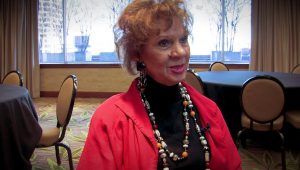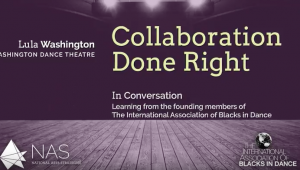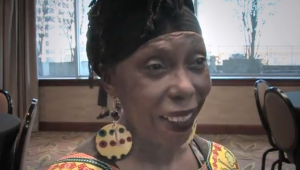One of the most important responsibilities for any nonprofit is to understand how you can best leverage organizational assets to serve your mission and your constituents. But often, our assets alone aren’t plentiful enough to let us deliver on our mission with the level of impact we’d like. Partnerships are one way to do more without the requirement of additional internal resources, but it’s important to enter into a partnership for the right reasons. Regardless of shared vision or a great rapport, making the most out of collaborations requires that you consider how a potential partner may benefit you, but also what you bring to the relationship and how using your resources in support of this relationship will help you better serve your communities.
Alternate ROOTS, a member-based service organization serving artist-activists in the southern US, is an example of an organization that is thinking about how they can strategically use their assets (financial, technical and human) to support their members’ work at a higher level. Through their Community/Artist Partnership Program (C/APP), founded in 1993, Alternate ROOTS provides grants and project support for community players and artists with the goal of helping them develop sustainable relationships that will help them use art to support and address issues in their communities. I spoke with Executive Director Carlton Turner about how supporting these partnerships is teaching Alternate ROOTS about what makes partnerships successful and how it helped them identify an opportunity to use their strengths as an organization to do more.
Historically, C/APP participants have received support from ROOTS in the form of funding, technical assistance and general guidance. At the outset of each project, ROOTS encourages each partner to clearly articulate their objectives for the partnership, including what each desires to gain from and what they can contribute to the relationship, who they intend to serve through the project and who will be responsible for what aspects of the project. Partners answer key questions that will help them think through all elements of the project using Virginia Tech professor Bob Leonard’s Partnership Work Kit.
Doing this important pre-work helps artists learn about managing partnerships beyond the creative collaboration, teaching them, for example, how to navigate different power structures and providing a frame for discussing sticky details like finances and fundraising. As Turner sees it, putting in this effort at the outset of a project helps engender openness and transparency throughout the process, which is crucial to a project’s success. It also encourages each partner to think deeply about why they should collaborate and what they have to offer each other. It’s important to be honest rather than opportunistic if a successful and sustainable project is the goal. Partnering should happen for the right reasons and it may be that, after going this thorough process, potential partners decide collaboration is not the best answer.
Alternate ROOTS-sponsored partnerships are an example of how small grants can have large impact, as Turner discussed in last winter’s GIA Reader, but even successful initiatives can have potential do more. Now, twenty years since the program’s founding, Alternate ROOTS is working to build on the program to increase the potential impact and sustainability of partnerships: Alternate ROOTS has recently begun answering the partnership questions themselves, evaluating how they can better leverage their strengths to increase the impact and chances of success for C/APP projects.
Moving forward, the organization will take on the role of a third partner, rather than grantor, to better leverage their skills, resources and member network in the interest of projects that are aligned with the Alternate ROOTS mission and organizational direction. Turner hopes that acting as a third partner will not only offer an opportunity for his organization to do mission-driven work, it will help C/APP participants stave off or better address some of the biggest challenges in partnering, such as leadership transitions or failure to raise matching funds. If these challenges can be minimized, partners can focus their energy on tackling the issue that brought them together in the first place. In an effort to learn more about how C/APP is working and help ensure the partners’ success, Alternate ROOTS is also using their expertise to build metrics into the program. These metrics will help participants understand how each step of the process works, enabling them to make improvements, elevate the way they talk about their work and show in real time how partnerships are benefiting Alternate ROOTS members and their communities. Having this vocabulary and knowledge will empower artists and community members to champion their work with stakeholders and potential funders, as well as prepare them to carry the work forward after a C/APP project concludes.
As a service organization, Alternate ROOTS is in a unique position in that its mission includes supporting others’ work. For Alternate ROOTS, becoming more integrated in C/APP projects helps them better serve their members by applying their existing talents, but any nonprofit organization can learn from this example. Alternate ROOTS demonstrates that adaptability and careful thinking about how to best use your resources can help increase an organization’s overall impact. C/APP provides great value to Alternate ROOTS members and their communities, but by understanding the needs of his constituents as well as what his organization has to offer, Turner has discovered a way to more comprehensively serve his mission and his stakeholders.
In the following video, Carlton Turner provides some of his ideas about how you can approach partnerships in a way that will help build sustainable relationships and help ensure success for all involved.


